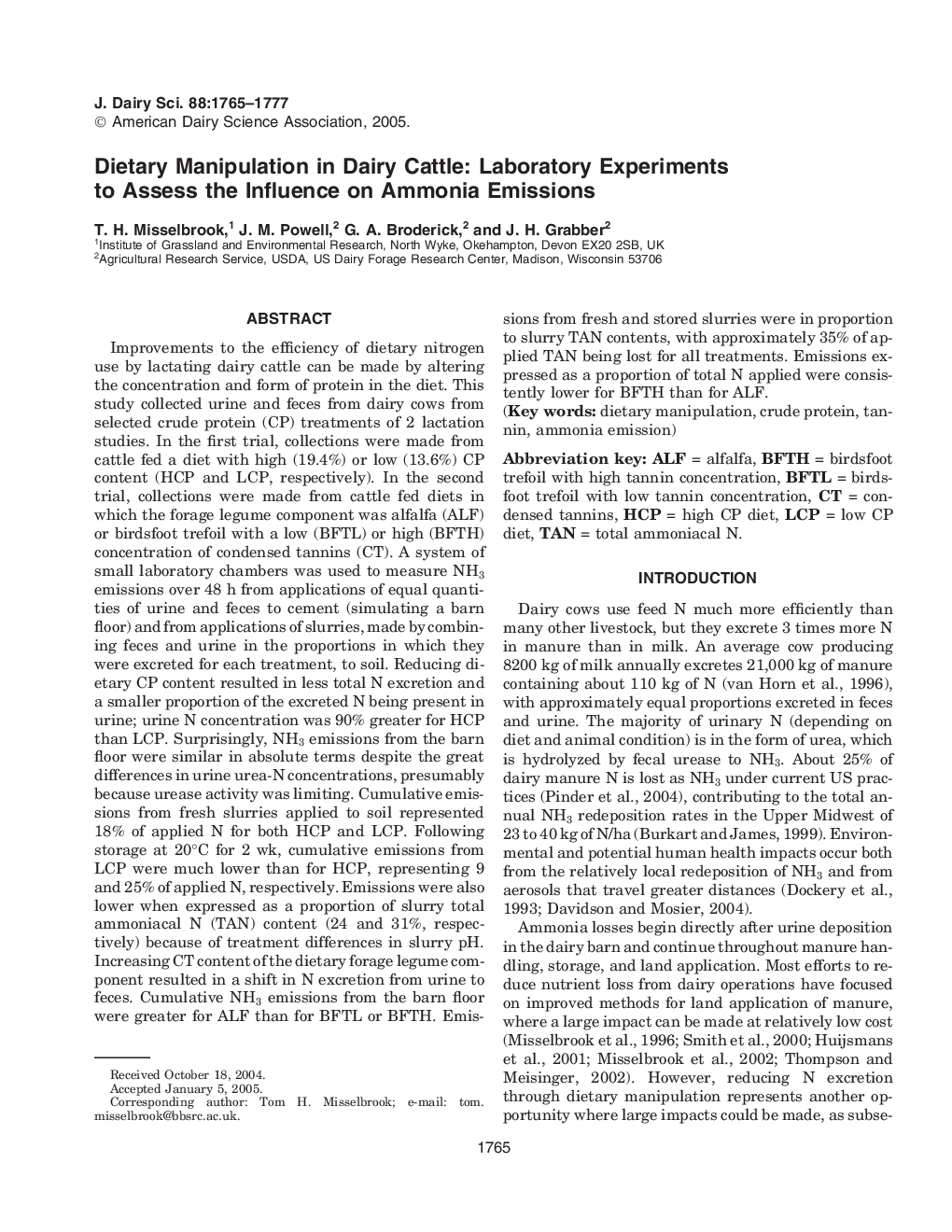| Article ID | Journal | Published Year | Pages | File Type |
|---|---|---|---|---|
| 8981317 | Journal of Dairy Science | 2005 | 13 Pages |
Abstract
Improvements to the efficiency of dietary nitrogen use by lactating dairy cattle can be made by altering the concentration and form of protein in the diet. This study collected urine and feces from dairy cows from selected crude protein (CP) treatments of 2 lactation studies. In the first trial, collections were made from cattle fed a diet with high (19.4%) or low (13.6%) CP content (HCP and LCP, respectively). In the second trial, collections were made from cattle fed diets in which the forage legume component was alfalfa (ALF) or birdsfoot trefoil with a low (BFTL) or high (BFTH) concentration of condensed tannins (CT). A system of small laboratory chambers was used to measure NH3 emissions over 48 h from applications of equal quantities of urine and feces to cement (simulating a barn floor) and from applications of slurries, made by combining feces and urine in the proportions in which they were excreted for each treatment, to soil. Reducing dietary CP content resulted in less total N excretion and a smaller proportion of the excreted N being present in urine; urine N concentration was 90% greater for HCP than LCP. Surprisingly, NH3 emissions from the barn floor were similar in absolute terms despite the great differences in urine urea-N concentrations, presumably because urease activity was limiting. Cumulative emissions from fresh slurries applied to soil represented 18% of applied N for both HCP and LCP. Following storage at 20°C for 2 wk, cumulative emissions from LCP were much lower than for HCP, representing 9 and 25% of applied N, respectively. Emissions were also lower when expressed as a proportion of slurry total ammoniacal N (TAN) content (24 and 31%, respectively) because of treatment differences in slurry pH. Increasing CT content of the dietary forage legume component resulted in a shift in N excretion from urine to feces. Cumulative NH3 emissions from the barn floor were greater for ALF than for BFTL or BFTH. Emissions from fresh and stored slurries were in proportion to slurry TAN contents, with approximately 35% of applied TAN being lost for all treatments. Emissions expressed as a proportion of total N applied were consistently lower for BFTH than for ALF.
Keywords
Related Topics
Life Sciences
Agricultural and Biological Sciences
Animal Science and Zoology
Authors
T.H. Misselbrook, J.M. Powell, G.A. Broderick, J.H. Grabber,
